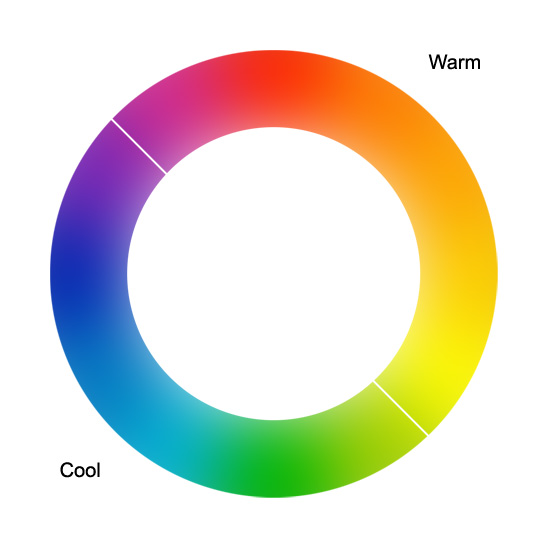Every color has a certain bias towards what’s called warm and cool. It’s not something that’s overwhelming; it’s subtle. But it’s an important element in color mixing as it influences the results.
As a group, reds and yellows are considered warm colors and blue a cool color. But if you compare different reds (or yellows or blues), you’ll see that there are warm and cool versions of each of these colors (relative to each other only). For example, cadmium red is definitely warmer than alizarin crimson (though alizarin crimson will always be warmer than, say, a blue).
Why Do I Need to Know About Warm and Cool Colors?
It’s important to recognize that individual colors have a bias towards cool or warm for color mixing. If you mix two warms together, you’ll get a warm secondary color and, conversely, if you mix two cools together you’ll get a cool secondary.
For example, mixing cadmium yellow and cadmium red light creates a warm orange. If you mix lemon yellow with alizarin crimson, you get a cooler, more gray orange. Mixing secondary colors is not only about the proportions in which you mix two primary colors, but also knowing what different reds, yellows, and blues produce.

Leave a Reply
You must be logged in to post a comment.